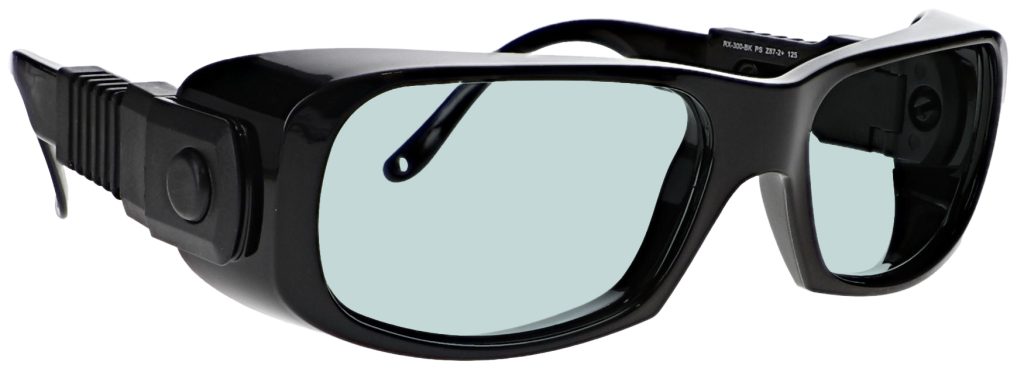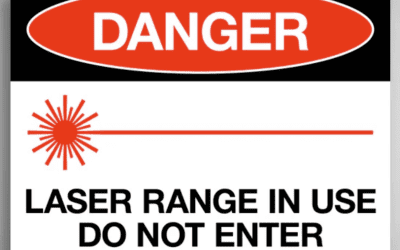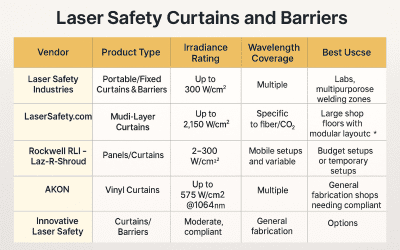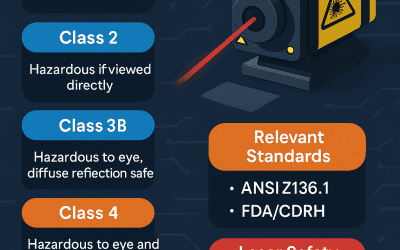Laser Safety Basics – Protecting your Eyes
When used properly, lasers are useful for many applications. However, everyone should learn how to protect their eyes from power laser beams. People who work with powerful lasers in scientific laboratories, medical institutions, or industry need to fully understand the risk and how to protect themselves.
Why are lasers dangerous?
All laser light beams carry energy, and when it strikes biological material (like skin or eyes) that energy is absorbed and turned into heat. The more concentrated and powerful the beam of light, the more heat it transmits. Small, highly focused beams of light go right through your cornea and lens and focus the light even more. It hits a tiny spot on your retina, destroying photoreceptor cells. This causes a temporary or permanent blind spot before you can blink. Powerful lasers in the visible to near-infrared spectrum (400 to 1400 nanometers) heat your entire retina. Your cornea absorbs laser beams with a wavelength of under 300 nanometers and beams in the high infrared range, which can inflame them, called photokeratitis, or more seriously burn them. Your eye’s lens absorbs laser beams with a wavelength of under 400 nanometers, which increases the risk of cataracts. That clouds your lens, blocking your vision. A wider laser beam can cause momentary flash blindness just like any other extremely bright light when it shines directly into your eyes before your blinking reflex can work. The human eye cannot see infrared laser light. Therefore, such a beam can damage your eye without even triggering your blinking reflex. Some laser beams, typically closer to blue or ultraviolet on the spectrum, cause damaging photochemical reactions in the tissue of your eyes.
Lasers Classifications
Lasers are classified according to their strength and with Class 1 being the lowest and Class 4 being the highest. Class 3R, 3B and 4 lasers require laser safety goggles and glasses for protection. The American National Standards Institute (ANSI) issued its Z136 standards classifying lasers according to the risk they pose, and the Occupational Safety and Health Administration (OSHA) uses them.
Workplace Laser Safety
Your company’s laser safety officer is key to creating and maintaining a safe workplace. All employees should understand the risks of using lasers and should not be complacent. Here are some laser safety tips:
- Never allow anyone to place their face or eyes at the same level as the laser beam.
- Leave watches, rings, and all other jewelry outside the laboratory.
- Reduce power when adjusting and aligning beams.
- Use an interlock to automatically shut the laser down when needed. The most dangerous lasers, Class 3B and Class 4, normally come with an interlock system. That means they immediately shut down under dangerous circumstances.
- Have a Certified Laser Safety Officer on duty. Restrict access to lasers while in use only to trained and authorized personnel.
Class 3R, 3B, and 4 Lasers Require Goggles and Glasses for Safety
These are the most dangerous types of lasers, and they are mainly used in laboratories, industry, hospitals, and the military. Everyone working with them should wear the proper protective eyewear. These act as filters to absorb the laser light, greatly reducing its intensity. The manufacturers make them of glass and polycarbonate to filter specific wavelength ranges. You make certain your glasses have the correct wavelength, or they cannot filter the laser beam. The other important aspect of laser safety glasses is Optical Density. The stronger your laser beam, the higher OD it requires to keep your eyes safe. You must make certain you wear the proper glasses. Manufacturers post their wavelength and OD in the frames. Your Certified Laser Safety Officer knows the requirements for the laser you are using.




